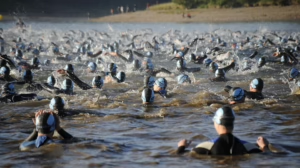Injury Prevention for Triathletes: Staying Healthy on the Course
Triathlon, a grueling test of endurance and versatility, poses a unique set of challenges for athletes who engage in swimming, cycling, and running. While the thrill of competition and the satisfaction of crossing the finish line is unparalleled, it also comes with the risk of injury. Understanding how to prevent injuries can be the determining factor in an athlete’s performance and overall enjoyment of the sport. This article explores effective strategies for injury prevention tailored specifically for triathletes, ensuring that you can stay healthy on the course.
Understanding Common Injuries in Triathlons
Before diving into prevention strategies, it’s crucial to understand the injuries that triathletes most frequently encounter. Common injuries include:
-
Swimmer’s Shoulder: A term that refers to a range of shoulder injuries due to repetitive overhead motion, particularly prevalent in the swimming segment of a triathlon.
-
Cyclist’s Knee: Caused by improper bike fitting, poor cycling mechanics, or overuse, this knee pain can significantly hinder performance.
-
Runner’s Knee (Patellofemoral Pain): This common condition arises from the repetitive impact of running and is often exacerbated by muscle imbalances or improper footwear.
-
Achilles Tendinitis: Overuse and poor biomechanics can lead to inflammation of the Achilles tendon, causing pain in the back of the ankle.
-
Shin Splints: Stress on the shinbone during running can result in aching pain and inflammation.
-
Iliotibial Band Syndrome: Friction between the iliotibial band and the femur can result in pain on the outer side of the knee.
Recognizing these risks allows triathletes to take preemptive measures, enhancing both safety and performance.
The Athlete’s Approach to Injury Prevention
1. Proper Training Regimen
a. Gradual Progression
One of the most effective ways to prevent injuries is to gradually increase training loads. The principle of progressive overload should guide your training to allow your body to adapt without undue stress. This includes:
- Volume and Intensity: Increase the distance and intensity of your workouts progressively—no more than 10% per week.
- Cross-Training: Incorporate a variety of workouts that engage different muscle groups to avoid repetitive strain.
b. Periodization
Implementing a periodized training plan is essential. This involves varying training intensity and volume over the course of the season. Prioritize different skills and maintain well-rounded fitness, which can significantly minimize injury risks.
2. Technique Optimization
a. Swimming Technique
Proper swim mechanics reduce the risk of swimmer’s shoulder and other injuries. Seek guidance from a coach to refine your stroke, focusing on:
- Body Position: Maintain a streamlined posture with a neutral spine.
- Breathing: Integrate breathing seamlessly to reduce strain on the shoulders.
b. Cycling Mechanics
Correct bike fit cannot be overstated. A poorly fitted bike can lead to significant injuries. Key areas to check include:
- Saddle Height: Should allow for a slight bend in the knee at the bottom of the pedal stroke.
- Handlebar Height: Should be comfortable and promote a flat back position.
c. Running Form
Focus on improving your running technique to minimize risks of injuries such as runner’s knee:
- Footstrike: Aim for a midfoot strike to disperse impact forces evenly.
- Cadence: Aim for a higher cadence (180 steps per minute is a common benchmark) to reduce the impact on joints.
3. Incorporating Strength Training
A well-rounded strength training program can enhance muscle balance and joint stability. Focus on:
- Core Strength: Stability in the core translates to better performance and injury prevention in all three disciplines.
- Leg Strength: Exercises such as squats, lunges, and deadlifts build strength in the key muscles involved in running and cycling.
- Upper Body Strength: Don’t neglect your upper body; it plays a vital role in swimming efficiency.
4. Flexibility and Mobility Work
Improving flexibility through regular stretching routines can help maintain a full range of motion, reducing the risk of injury. Consider these approaches:
- Dynamic Stretching: Incorporate dynamic stretches as part of your warm-up to prepare muscles and joints for activity.
- Static Stretching: Post-workout static stretching helps maintain flexibility.
- Foam Rolling: Regular use of a foam roller can alleviate muscle tightness and promote recovery.
5. Rest and Recovery
In triathlon training, rest days are as important as training days. Listen to your body’s signals:
- Rest Days: Schedule regular rest days to allow muscles to recover and adapt.
- Sleep: Prioritize quality sleep to support overall recovery and hormonal balance that regulates muscle repair and growth.
6. Nutrition and Hydration
An often overlooked aspect of injury prevention is nutrition. Proper fueling and hydration play a crucial role in performance and recovery:
- Balanced Diet: Focus on a diet rich in whole foods—fruits, vegetables, lean proteins, and whole grains can help to promote muscle repair and strength.
- Hydration: Dehydration can lead to fatigue and a higher risk of injury. Aim for adequate hydration before, during, and after activity.
7. Monitoring and Evaluating Feelings
Keep a training log to monitor how you feel during and after training sessions. Look for:
- Pain Levels: Document any discomfort to recognize patterns that may indicate developing injuries.
- Energy Levels: Assess your energy before and after workouts to gauge if you need to alter your training load.
8. Injury Management Strategies
Despite best practices, injuries can happen. Implementing effective management strategies can get you back on track quickly:
- R.I.C.E. Method: Rest, Ice, Compression, and Elevation can mitigate early stages of injury.
- Seek Professional Help: Working with physical therapists or sports medicine professionals is crucial when dealing with injuries.
9. Psychological Preparedness
Mental preparedness is integral to successfully navigating the physical demands of triathlon training. The psychological aspect of injury prevention includes:
- Stress Management: Implementing relaxation techniques, such as meditation or yoga, can enhance mental resilience.
- Goal Setting: Setting realistic, incremental goals can keep you motivated without overburdening your body.
10. Community and Support
Support from fellow athletes and coaches can serve as a motivational tool while keeping accountability in check. Join local clubs or online forums to share experiences and strategies for injury prevention.
Conclusion
The journey through triathlon training is both physically and mentally challenging. Injury prevention is not just about avoiding pain; it’s about enhancing performance, longevity, and enjoyment in the sport. By adopting a comprehensive approach—grounded in proper training techniques, strength and flexibility work, nutrition, and psychological preparedness—triathletes can safeguard their bodies and thrive in their pursuit of excellence.
As you embark on your triathlon journey, remember that the goal is not just to finish the race but to finish it healthy and ready for the next challenge. Embrace the lessons of injury prevention, and you will find that staying healthy on the course can lead to improved performance and a more fulfilling athletic experience.


























Add Comment